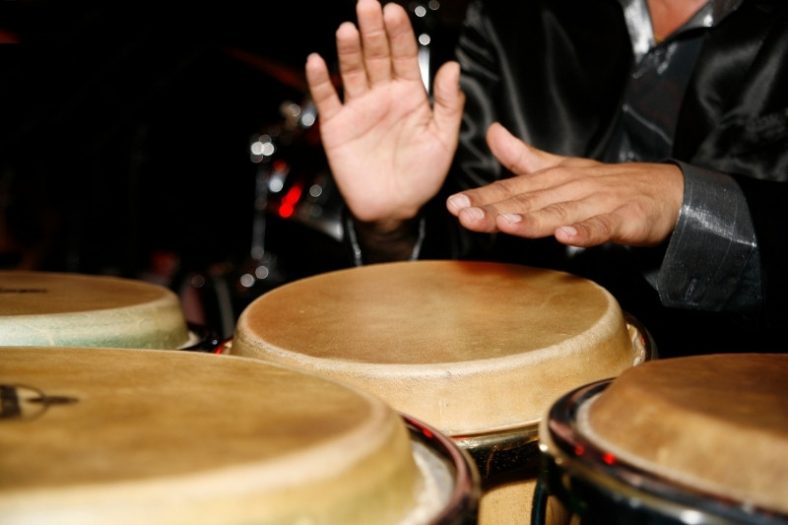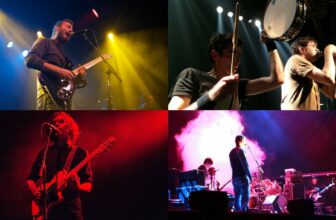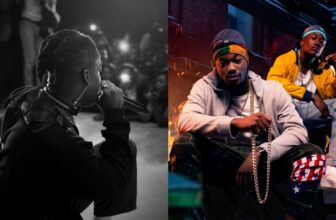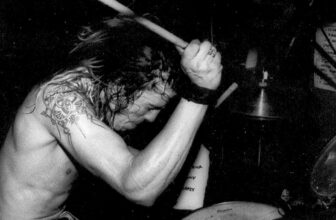17 Types of Latin Music Genres
Music from parts of Spain, Latin America, and Portugal is collectively known as ‘Latin’ music. While there are many genres of Latin music, the languages used are predominantly Spanish and Portuguese.
The world of Latin music is vast and has a deep-rooted cultural history. The term “Latin music” originated in the United States of America in the 1950s because of the large Latino population in New York City. However, this blanket term does not entirely consider how complex and radically different the various sub-genres can be.
If you are curious about Latin music and want to know more about the different genres and sub-genres, listed below are 17 types of Latin music.
Contents
1. Salsa
‘Salsa’ originated in Cuba and has its roots in Afro-Cuban music. It features a syncopated rhythm section that follows a ‘call and response’ structure. The chorus is generally expanded towards the end of the song to accommodate an increase in tempo. This is because salsa music is often accompanied by dancing and the music is lively and fast.
While Salsa music is popular even today, it reached peak popularity in the 1970s in New York City with the emergence of multiple Salsa bands. This new musical style was based on Arsenio Rodríguez, Roberto Faz, and Conjunto Chappottin’s ‘son montuno’, a Cuban subgenre of Latin music.
In the 1980s Salsa spread to countries such as Venezuela, Colombia, Mexico, and Peru. The genre gained international popularity during this time, but it also gave birth to ‘timba’, but we’ll get to that.
Salsa was integrated into pop music during the 90s and Sergio George produced multiple hits for artists such as Marc Anthony and La India.
2. Merengue
‘Merengue’ originated in the Dominican Republic in the 1800s. The earliest form incorporated European instruments such as the guitar, which were eventually replaced with the accordion and the ‘Tambora’, a traditional drum.
Under the rule of Rafael Trujillo in the Dominican Republic, Merengue was named the national music and dance style of the country. It became popular in other places such as Venezuela, Ecuador, and New York City in the USA.
In Merengue, the rhythm generally follows a 2/4 beat, and various percussion instruments are used to create a syncopated pattern. Since there is a heavy emphasis on intricate rhythm, melody instruments usually accompany percussions.
Today Merengue can be classified into 3 main subgenres: the traditional ‘Perico Ripiao’, ‘merengue de orchestra’ which incorporates a big band, and Merengue with guitars known as ‘merengue de Guitarra’.
Some prominent names in Merengue are Wilfrido Vargas, Eddy Herrera, Milly Quezada, and Miriam Cruz.
3. Tango
Like many other genres of Latin music, dance is an integral part and the music is often played to facilitate it. Similarly, in Tango, the beat is on a 2/4 or 4/4 pattern, and instruments such as the guitar, piano, flute, trumpet, and double bass are used to create an accompanying melody.
This genre of music originated in the 19th century in Uruguay and Argentina among European and African immigrants, who fused European instruments with African rhythm.
As Big Band music gained popularity in the United States of America, Tango was performed in big band style often consisting of 12 musicians in a single ensemble. The period between 1930 to 1950 is often regarded as Tango music’s ‘golden age’.
Tango continues to be a popular genre of music even today and some of its most prominent exponents include Ástor Piazzolla, Vicente Greco, and more recently, Diego El Cigala.
4. Reggaeton
Even those who may not have extensively heard Latin music, are probably familiar with this genre of music that originated in Panama in the 1980s and spread to Puerto Rico, before gaining popularity in the mainland US.
Reggaeton emerged as a result of Dancehall being fused with Caribbean music and hip-hop. Today, it is one of the most popular genres of music globally and can be identified by the use of West Indian rhythm patterns such as soca, cadence, calypso, and Dancehall.
The songs have rap lyrics with a prominent hook line that can be heard in between a typical song structure with a verse, chorus, and bridge. Some examples of Reggaeton music are Daddy Yankee, Don Omar, and Bad Bunny.
5. Bachata
Like Merengue, Bachata originated in the Dominican Republic from the former, along with son and bolero. This genre of music has a slow tempo and the themes are often romantic and sensual. The guitar is used extensively to convey the melody.
Traditional Bachata music is often compared to blues music in the USA because it was performed by the working class in the 60s and 70s. Today, Bachata has merged with many popular genres of music such as pop, techno, hip-hop, and R&B.
Hector Acosta, Aventura, and Frank Reyes are some examples of Bachata musicians.
6. Tejano
Popularly known as ‘Tex-Mex’, Tejano music is a combination of Spanish vocals with European rhythm patterns such as polka and waltz. This genre originated in Texas and drew influences from Mexico as well as the musical traditions of immigrants from countries such as Germany and the Czech Republic.
Traditional Tejano music used instruments such as accordions, guitars, and acoustic drums. But in the 1920s and 30s, it was influenced by the style of big band music and a typical Tejano ensemble consisted of swing bands playing Mexican folk music in conjunto style.
As popular music trends such as rock and roll, rhythm and blues, and pop emerged in the following decades, Tejano music too saw shifts in instrumentation, arrangement, and themes.
In the late 80s and early 90s, Selena emerged as one of the most successful Tejano music stars of all time, before her tragic death in 1995. Other notable Tejano musicians are Conjunto Bernal, Flaco Jiménez, and Sunny Sauceda.
7. Mambo
Popularized by the ensemble Arcaño y sus Maravillas in the 1930s, Mambo developed in Cuba from danzón, a genre we will also look at later in the list.
Mambo music follows a 4/4 meter and the rhythm is carried out by a percussion section consisting of instruments such as congas, bongos, claves, timbales, guiros, and cowbells. Melody instruments such as guitar, clarinet, piano, saxophone, etc. are used to establish harmonic elements to the syncopated beats.
Dámaso Pérez Prado was known as the ‘King of Mambo’ for introducing it to an international audience in the late 1940s. His biggest hit was the song ‘Mambo No.5’. The genre became a “dance craze” in the USA thanks to orchestras led by musicians such as Prado, Tito Rodriguez, and Tito Puente.
Mambo is considered a sub-genre of Salsa music.
8. Bossa Nova
The fusion of Samba with Jazz gave rise to Bossa Nova in Brazil during the late 50s and 60s. Guitarist João Gilberto and composer Antonio Carlos Jobin are often considered founders of this genre.
Bossa Nova rhythms are syncopated on the second measure of a 2/4 time signature beat and unconventional chord voicings and patterns are used to convey melody. The songs often follow a 12-bar structure and characteristics such as repetition and walks are a result of Jazz’s influence on the genre.
Astrud Gilberto’s ‘The Girl From Ipanema’ and ‘Agua de Beber’, Sergio Mendez’s ‘Mas que Nada’, and the soundtrack of the 1959 movie ‘Black Orpheus’ are considered Bossa Nova classics.
9. Cumbia
Cumbia refers to a broad style of music that originated in Columbia before spreading to countries such as the USA, Argentina, Mexico, Bolivia, Cuba, etc. where it developed regional variations.
This genre can be identified by using percussion instruments such as the maracas, which are played on a double-time beat. Other instruments such as the flute and accordions are also used to establish a melody.
Early forms of Cumbia were instrumental and used clave patterns with traditional drums. In modern Cumbia, the vocals are in Spanish, and various African languages are often added to the track.
Since Cumbia has many regional variations, over the decades subgenres such as ‘Cumbia Norteña’, ‘Cumbia Rebajada’, ‘Chicha’, ‘Cumbia Sonidera’, etc. have emerged. Some examples of Cumbia artists are Los Ángeles Azules, La Sonora Dinamita, and Los Gaiteros de San Jacinto.
10. Samba
Also known as ‘urbano carioca’, Samba originated in Brazil during the first half of the 20th century. This Afro-Brazilian genre of music combines African percussions with lyrics in Portuguese. It is widely believed that the roots of Samba can be traced back to African slaves in the state of Bahia.
In this genre, melody and syncopated rhythmic patterns in a 2/4 or 4/4 time signature are prominent. Traditionally, the music is performed by ensembles known as ‘escolas de samba’ (Samba schools).
Samba emerged in Rio de Janeiro in the 1910s but resurfaced in the 60s because of musicians like Guilherme de Brito and Nelson Cavaquinho. Today, Samba is an integral part of the Carnival parades of Brazil and the influence of this genre can be heard in many modern pop and dance tracks.
11. Grupero
‘Grupero’ originated in the 70s in various regions of rural Mexico as rock music started to become popular globally. During the formation years of this genre, Grupero musicians would play covers of English songs in Spanish. In the 70s, these bands started playing ballads that were generally associated only with mariachi.
As electric instruments such as the guitar, bass, and synthesizers became popular in the 80s, Grupero music started to thrive on a commercial level spearheaded by artists such as Chico Che and Rigo Tovar.
Today, Grupero is recognized as a separate category by the Latin Grammy Awards and some famous musicians of this genre are Los Temerarios, La Mafia, and Grupo Bryndis.
12. Punto
Like many forms of music played to accompany a dance, ‘Punto’ was popular in 17th century Cuba before establishing itself as a genre of music in the later centuries.
Punto music relies on string instruments such as the Cuban láud, tres, tiple, and the Spanish guitar. The instruments are picked and not strummed. This practice of ‘punteando’ gives the genre its name. Melodies are sung by different groups of singers and percussion instruments such as the clave and guiro are used.
Over the decades, many regional variations of this genre have developed. Some musicians who are credited for modernizing it are Celina Gonzàlez, Indio Nabori, and Albita Rodríguez.
13. Timba
With roots in American funk, Afro-Cuban folk, and rumba, Timba was a popular genre of music in Cuba during the 1980s and 90s.
In this form, the bass drum is heavily used along with the clave. While it is often confused with salsa music, Timba is more aggressive. The songs have segments known as “gears” which denote changes in emotion. This is typically done by adding or removing instruments played in the song.
Musicians who play Timba are generally proficient in technical genres such as jazz and classical music, thus helping them improvise during the different gears.
Los Van Van, Manolito y su Trabuco, and Bamboleo are examples of musicians keeping the genre alive even today.
14. Huayno
Huayno is popular in Bolivia, Chile, and Peru and its exponents are often ethnic groups such as the Quechua. This subgenre can be traced back to the colonial period and is a part of Andean music and dance culture.
The rhythm emphasizes the first beat, which is then followed by two short beats. Instruments such as the flute, mandolin, guitar, siku, charango, and harp are used along with vocals. Some subgenres of Huayno are ‘Hiyawa’ and ‘Carnaval Ayacuchano’, popular in Peru.
Some of the most famous Huayno musicians are Yma Sumac, Julia Illanes, and Picaflor de los Andes.
15. Nueva Canción
As left-wing politics became popular in the 1970s, Nueva Canción became the face of the movement, with musicians often facing persecution by the government for performing this genre of music.
Songs in the genre have a strong social or political message and their roots lie in folk music such as Afro-Peruvian, Andean, Spanish, and Cuban music.
While Nueva Canción is often regarded as a movement, more than a genre, regional variations of it can be found in countries such as Chile, Nicaragua, Argentina, Spain, and Cuba.
Silvio Rodríguez, Joseíto Fernández, Pablo Milanés and Carlos Puebla are regarded as icons in this genre of music.
16. Pachanga
This genre originated in Cuba in the 1950s, as immigrants moved to the United States of America. Pachanga became extremely popular in places such as New York City and is often considered a predecessor of genres such as Salsa.
Pachanga is a combination of Merengue and Son Montuno, performed by ensembles known as ‘Charango’ who use instruments such as drums, flute, horns, and even violins.
The song ‘La Pachanga’ by José Fajardo is considered one of the greatest of all time and is performed by musicians even today.
17. Danzón
Danzón is considered the official music of Cuba and is also popular in places such as Puerto Rico and Mexico. It has a distinct structure that consists of an introduction known as ‘paseo’, the main melody, a repeat, and an ending that follows an ABAC format.
Instruments such as timbales, flutes, violins, claves, and guiro are played in syncopation to a 2/4 time signature by Charangas.
The works of Amador Pérez Dimas are considered a milestone in Mexican Danzón. Miguel Faílde’s ‘Las Alturas de Simpson’ is regarded as the first Cuban Danzón composition.
Conclusion
The umbrella of Latin music is incredibly broad and diverse. While genres such as Huayno have their roots in indigenous music and reflect a vibrant history of the country, others such as Bossa Nova and Reggeaton have been heavily incorporated into popular music by many artists.
There are many more genres of Latin music that exist today and this list is only a quick look at some of the most prominent ones. I hope you will discover exciting new music from this and add some favorites to your playlists.






